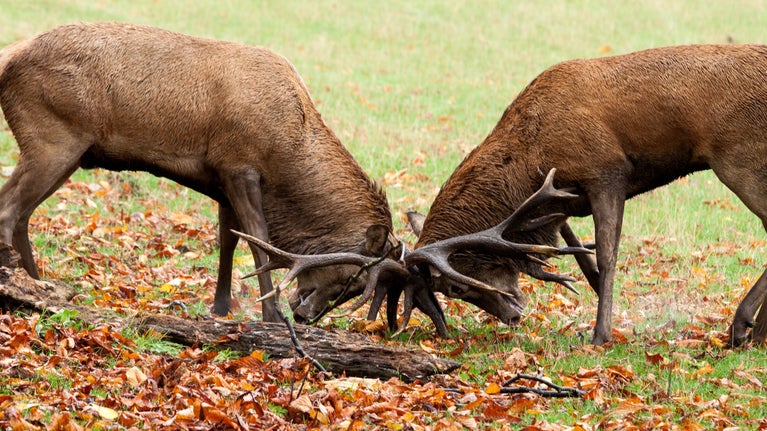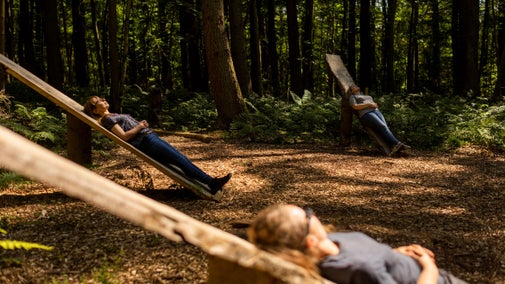
Explore the natural world
From learning how to identify trees to discovering the underwater world of rockpools, pick up some top tips to help you get closer to nature.

Today's busy lives can have a significant impact on our mental and physical wellbeing. If you’re looking to escape the hustle and bustle for a while, why not have a go at forest bathing? This is the practice of slowing down and immersing yourself in the forest atmosphere.
Forest bathing or ‘shinrin-yoku’ was first developed in Japan in the 1980s, following scientific studies conducted by the government. The results showed that two hours of mindful exploration in a forest could reduce blood pressure, lower levels of the stress hormone cortisol and improve concentration and memory.
They also found that trees release chemicals called phytoncides, which have a protective antimicrobial effect on human bodies and thereby boost the immune system. As a result of this research, the Japanese government introduced ‘shinrin-yoku’ as a national health programme.
Over the last few years forest bathing has begun to gain popularity in the UK. Many of us naturally head outside as a way to unwind and feel refreshed, but the benefits of nature therapy are also backed up by science: in 2018 academics at the University of Derby found that improving a person’s connection with nature led to significant increases in their wellbeing.

Forest bathing is no more complicated than simply going for a wander in your local woods or park. The only difference is that rather than walking for exercise, you take the time to really focus on the natural world around you, from the rays of sunlight catching the leaves to birdsong echoing from the canopy. Here are some tips to get you started.

We commissioned a study that explored how soaking up the sounds of the natural world affects people, and found it relaxes us more than if we listen to a voiced meditation app.
Respondents were asked how they felt after listening to a one-minute recording of forest sounds, a meditative app or silence. The results showed that people felt 30 per cent more relaxed, 25 per cent less stressed and 20 per cent less anxious after listening to these sounds.
Further research of 2,000 British adults revealed that almost 40 per cent felt that hearing their favourite woodland sounds makes them happy, and birdsong topped the list as the most popular sound of woodlands.
Sometimes, a simple walk in woodlands, where you’re surrounded by the echoes of calling birds, and that satisfying crunch of fallen leaves and twigs underfoot, is the perfect remedy for reducing stress.
No matter whether the connection is with an outdoor or urban place, our research shows the intrinsic link between connections to place and the triggering of positive emotional experiences.

From learning how to identify trees to discovering the underwater world of rockpools, pick up some top tips to help you get closer to nature.
Forest bathing is a mindfulness practice developed in Japan that has gained popularity in the UK. It involves being immersed in nature and using sight, smell and touch to slow down the mind and relax.

The woodlands at Ashridge cover nearly 1000 hectares, the largest in-hand woodland within the care of the National Trust. The variety of woodland at Ashridge means a wide range of habitats are found across the estate including ancient woodlands, wooded commons and plantations.

Ancient trees are links to our past, they're species-rich habitats that support countless other organisms. Discover what makes a tree ancient and how to recognise them.

Camp under the trees at Brownsea Island, Dorset and uncover the history of the Scouts movement in 'Escape to adventure island'. You can also find more episodes from series seven, filled with nature and history.
